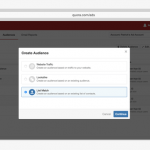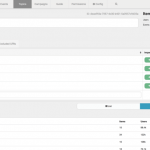Marketing operations 2.0: Defining the new organizational structure
What does the org chart for a successful marketing operations (MO) team look like? Columnist Debbie Qaqish takes a look at the characteristics that make up a strategic MO structure.

“Unless structure follows strategy, inefficiency results.”
As marketing operations (MO) capabilities mature, it’s up to the MO leader to modify the organizational structure to ensure it’s meeting current and future marketing strategies and goals. Nothing says commitment like an organizational chart, and we all know how challenging it is to develop a dedicated MO function.
Today it’s no longer good enough to have someone semi-dedicated to MO. When companies have a dedicated, fully developed MO structure, marketing makes a full transition from being a cost center to a revenue generator.
In 2018, we’ll see managers spending a lot of time designing the MO function so they can achieve their goals. What does the organizational chart for an effective MO department look like?
In 2012, I published a white paper called “The Revenue Marketing Center of Excellence (RMCoE).” This organization had two parts: the Demand Generation Center and the Marketing Operations Center. In the Marketing Operations Center, four key functions included (1) marketing technology management, (2) data management, (3) process optimization and (4) reporting, analysis and strategy.
In 2012, this description of a “Marketing Operations Center” was fairly sophisticated and ahead of its time. Fast-forward six years — while these four functions still apply, given the strategic nature of MO, they need an update.
The strategic MO structure
The strategic MO function is characterized by leadership, vision, cross-functional value-creation and transformation through operations. Much more than button-pushers and techies, a strategic MO function becomes a shared-services function.
Specifically, the strategic MO function revolves around accountability, customer intimacy and digital transformation. These three responsibilities shape the new structure. Let’s break it down.
Accountability
The strategic MO function is responsible for more than just a set of initiatives and activities. It is responsible for enabling marketing ROI and contributing to revenue, margins, customer acquisition, customer retention and ultimately, shareholder value. The MO group is the key to marketing achieving financial accountability, which is the litmus test for marketing success.
New roles: Accountability does not necessarily imply a new position on the org chart, but it does imply new skills. The MO leader is now charged with acting, walking and talking like a VP of sales. It’s now about achieving the number, and the MO leader must push this accountability down to every level of her organization.
Customer intimacy
Few parts of the organization own as much data about prospects and customers as marketing. Yet this data often sits unused and forgotten. Forrester and others have been talking about the “Age of the Customer” for years.
In 2018, we’re seeing marketing under enormous pressure to focus on the customer. This focus is about much more than campaigns. It includes helping the rest of the organization understand how prospects and customers are changing.
The MO group is responsible for the collection and analysis of prospect/customer data and then sharing these insights with all parts of the organization for better decision-making (not just for campaigns). Oh, and all of this needs to be performed basically in real time.
New roles: There must be someone who is tasked with the obsessive collection, analysis and sharing of key customer insights. This role will also be responsible for gathering other sources of customer data to include in the analysis. Collaboration and knowledge management will be essential skills.
Digital transformation
When the MO function moves from enabling digital marketing to facilitating digital transformation, it requires running marketing more like a business. Marketing is often a key element in a company’s digital transformation plan because marketing has been working with digital technologies for years.
As the pressure on marketing to do more across the company mounts, the MO group becomes more of a shared services function and runs marketing like a business. In this process, the MO team works across functions as much as it works with and for marketing.
New roles: New roles for the MO team in digital transformation center around cross-functional collaboration and running marketing like a business. Such new roles could include project management (for projects in and out of marketing), annual planning, and budgeting (establishing and managing).
A view to a structure
I love to see the Stackies every year at the MarTech conference. It’s a brilliant way to help marketing operations get real around how they work with technology.
The same can be said for the organizational structure of the MO capability. In all my years of writing, nothing has been more popular than organizational charts and models — i.e., how to build, model and organize something new. When you’ve never done something before, having a model is extremely helpful.
Perhaps we could add this as a contest category at the next MarTech conference? Invite MO leaders to submit their organizational charts and explain why they are organized this way. This kind of insight would be a highly visual way of revealing how the most successful MO teams are structured. A glimpse into how these org charts are structured would reveal key best practices for achieving marketing results in 2018.
Opinions expressed in this article are those of the guest author and not necessarily Marketing Land. Staff authors are listed here.
Marketing Land – Internet Marketing News, Strategies & Tips
(37)













